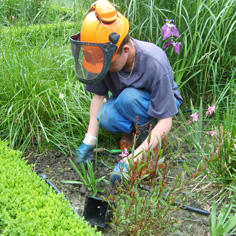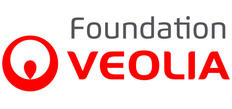
Social and Employment
Place
Communities of Communes of Noyant and Loire Longué, France
Sponsor
Christelle Renault
Grant(s)
10 000 € to the Selection Committee at 2009/12/01
Project leader
A.R.A.M.I.S.
The association A.R.A.M.I.S. (Association de rapprochement des Acteurs pour la Mobilisation et l'Insertion Socioprofessionnelle), created in February 2005 to address the needs of the Communities of Communes of Noyant and Loire Longué, first took charge of a Noyant workforce development project for the upkeep of open spaces and natural spaces. One year later, having a branch in every community, it simultaneously developed an activity in the small-scale restoration of heritage buildings.
The upkeep of riverbanks, rambling trails, forest spaces and wetlands, requires lightweight equipment, friendly to the landscape and the ecosystems, and at minimum cost to the municipality. Those belonging to the association, retrieved from older worksites, are now partly obsolete and break down repeatedly. They no longer guarantee the safety and productivity required for this type of project. The Veolia Foundation was approached to help finance the indispensable equipment: micro-tractor, chainsaws, hedge trimmers, brush cutters, etc., that will enable the association to respond to its customers, the river agencies and local and regional restoration authorities.
An association in a countryside dynamic
A.R.A.M.I.S., a subsidized "workforce development agency" can accommodate 16 minimum-wage earners and 2 young holders of integration contracts in social life (CIVIS) with a full time staff of 5 persons.
The association is one of the only regional workforce development structures located in a Rural Revitalization Zone. Its activity is expanding on solid foundations, with projects adapted to the public and meeting the needs of the local authorities. It upgrades the job status of persons experiencing difficulties in socioprofessional integration, especially confirmed criminals. The local partners trust it and use it as an avenue for recruitment. In 2008, its back to work rate was 58%, including 17% in durable jobs.

